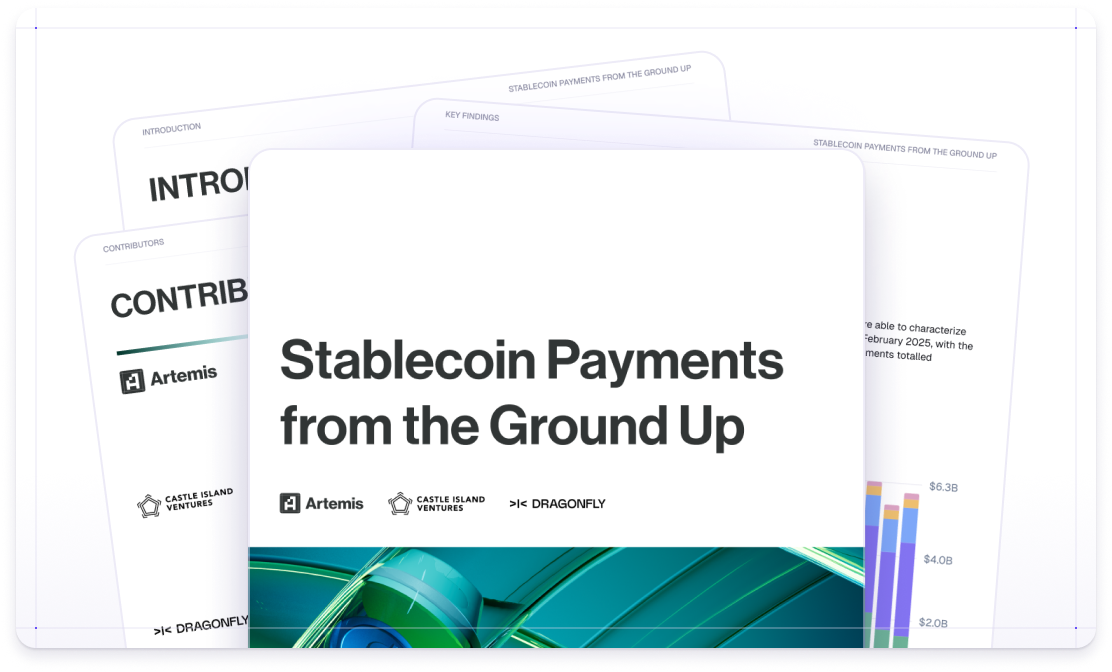Reports: The Future of Money Movement Is API-Driven — Are We Ready?; Do you think with stablecoin payments, crypto has found its killer app?; How does agentic commerce work?;
Let’s dive into this week’s curated collection of fintech reports, whitepapers, and expert guidelines in the latest edition of Fintech Wrap Up. Every resource featured is available for download
Insights & Reports:
1️⃣ Do you think with stablecoin payments, crypto has found its killer app?
2️⃣ India’s digital currency frontier: Envisioning the future of CBDC
3️⃣ Transforming Financial Services: The Impact of Asset Tokenization
4️⃣ How Big Are Stablecoin Payments, Really?
5️⃣ How does agentic commerce work?
6️⃣ Spotlight on growth: SaaS platforms
7️⃣ The Future of Money Movement Is API-Driven — Are We Ready?
TL;DR:
Welcome to the reports edition of the Fintech Wrap Up.
Wondering where the next payments breakthrough is coming from? Stablecoins are a strong contender. With over $240B in supply and nearly $100B in recent transactions, they’re speeding up cross-border payments—especially for individuals and SMEs. But for big corporates? Regulatory hurdles and trust issues still give traditional banking an edge. Real-time rails are also closing the gap fast.
India’s CBDC is quietly rewriting the rules of digital cash. With millions onboarded and features like offline payments and programmable transfers, it’s testing what money could look like in the 2030s. If successful, it may set the blueprint for others.
Want to invest in real estate or fine art with just $50? Asset tokenization is making it possible. With a projected $16T market by 2030, it’s redefining access to once-exclusive assets—but only if we solve the regulatory and tech puzzle first.
Agentic AI + tokenized payments = autonomous checkout. Visa and Mastercard are backing AI agents that can shop and pay for you securely. It’s not science fiction—it’s rolling out now.
And if you're building SaaS, take note: Embedded payments aren’t just a feature—they’re a growth strategy. Platforms that adopt them see up to 5x more revenue. Stripe’s playbook proves it.
Big shifts, real numbers, and bold ideas—right here. Let’s dive in.
Reports
Do you think with stablecoin payments, crypto has found its killer app?
The momentum behind stablecoin payments is undeniable, but several challenges remain—regulatory uncertainty and inconsistency, rising competition from real-time payment rails, and limitations for certain use cases.
🔹 Stablecoins offer strong value for cross-border payments, especially for individuals and SMEs. However, at scale (e.g., treasury operations for global corporations), issues arise—regulatory scrutiny, limited access to local banking rails and central banks, and fragmented compliance requirements.
🔹 For large enterprises, the integration, trust, and regulatory adherence of traditional banking systems remain critical. Some fintechs are addressing these challenges in the stablecoin space, but the ecosystem is still maturing.
🔹 Regulations vary widely. For example, the EU’s MiCA law requires e-money licenses for stablecoin issuers and custodians, along with strict reserve and transparency rules. This limits the number of players who can operate in the EU.
🔹 The Basel Committee treats public blockchain stablecoins like other crypto assets, assigning them a 1,250% risk weight—compared to 400% for private equity. This means banks must hold capital reserves equal to 100% of their stablecoin exposure, reducing appeal for financial institutions.
🔹 Meanwhile, real-time payments are catching up fast. Global banks like JPMorgan Chase and fintechs like Banking Circle are building real-time cross-border rails designed for treasury-scale use cases. These systems offer speed, compliance, and direct central bank access—posing a major challenge to stablecoin adoption.
🔹 As a result, it’s unlikely stablecoins will fully replace traditional cross-border rails. Still, they offer massive potential, and the competition should ultimately benefit users and the broader ecosystem.
🔹 One major risk: de-pegging—when a stablecoin's value drifts from its reference asset (e.g., USD, EUR). Causes include mass withdrawals, doubts about reserves, volatility in the underlying asset, or concerns around custodial arrangements. In some cases, de-pegging results from scams, fraud, or hacks.
Keep reading with a 7-day free trial
Subscribe to Fintech Wrap Up to keep reading this post and get 7 days of free access to the full post archives.



